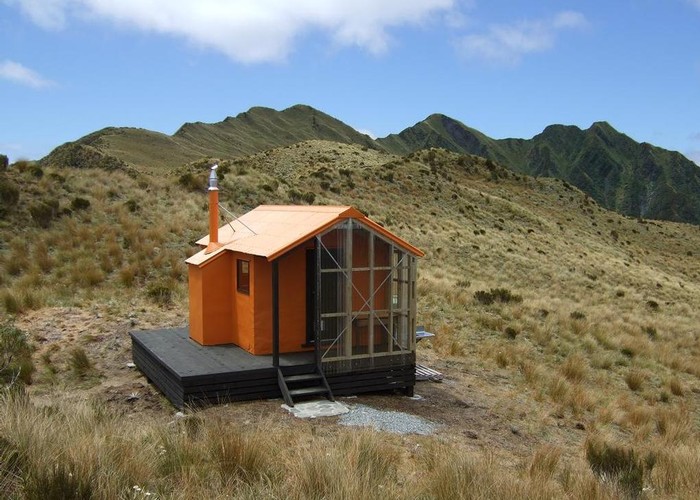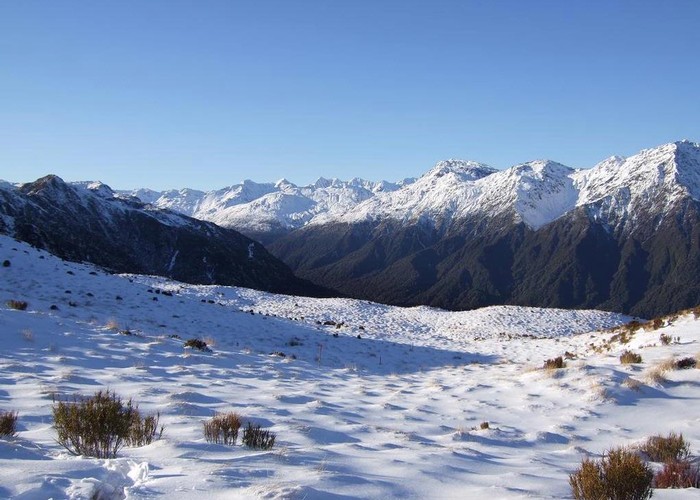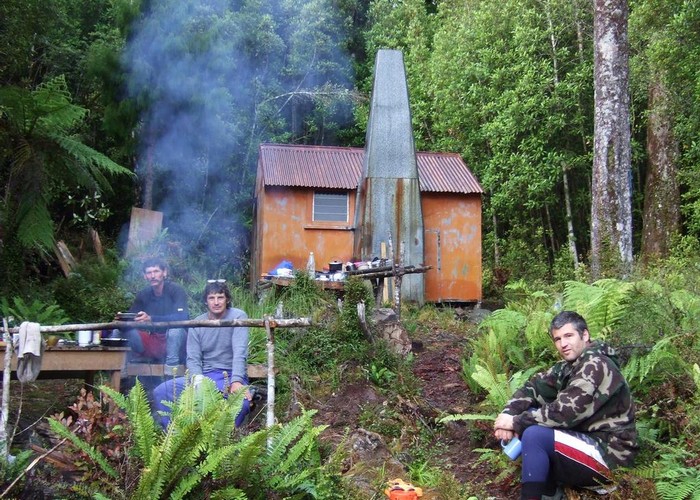
Most individuals who frequent the New Zealand back country associate the name permolat with the thin metal markers used to mark tracks. These markers, usually white, were used for approximately three decades by the New Zealand Forest Service (NZFS) to mark official tracks. Post 1987 the Department of Conservation (DOC) phased out permolat markers and switched to orange plastic triangle markers. In some areas DOC removed the permolat markers when erecting orange triangles. For various reasons including lack of funding DOC failed to maintain all of the vast network of tracks inherited from the NZFS. By the early 2000’s there were hundreds of kilometres of permolat marked tracks that were no longer being maintained by DOC . In many instances huts on such tracks were not being maintained, or were receiving just minimal maintenance. These huts were also under threat of removal because of lack of use. A situation had developed where some huts were ear-marked for removal because of their lack of use and deteriorating condition, yet this situation had largely occurred because the tracks to these huts had become overgrown.
In 2003 Hokitika raised Andrew Buglass who was very concerned about the potential loss of huts & tracks in Westland decided to achieve something beyond individual effort by mobilising others to help with the cause. In a two pronged approach he founded a website and started a group for like minded enthusiasts who were prepared to do something about the maintenance and preservation of back country huts and tracks. The group is named “Permolat” after the track markers on the types of tracks no longer being officially maintained. The website is called “Remote Huts Westland.”

Permolat members are active on the western side of the Southern Alps and focus on assets that are unmaintained or minimally maintained by DOC. They are involved with cutting and marking tracks, hut maintenance, providing up to date track/hut/ route information and lobbying for the interests of users of remote back country. Currently Permolat has 135 members. There is no membership fee and work is unpaid. DOC sometimes assists with materials or helicopter time but Permolat is mainly reliant on member goodwill and donations of money and materials. Currently more could be done if there was more money and labour. Anyone keen to be involved can find out how to become a member or how to donate to the cause by visiting the website. Here is the address "http://remotehuts.onlinegroups.net/"
Permolat has achieved much in its less than a decade of existence. Numerous tracks are being maintained that would otherwise overgrow and many huts are receiving maintenance that DOC is unable to do. Such work has certainly ensured that some remote huts are receiving more visits than they used to and are thus less likely to be candidates for removal. Permolat has taken responsibility for one hut and one bivvy under “Maintain by Community” agreements with DOC. Other agreements are likely to follow. The hut concerned is Mid Styx. Two working bees saw this hut repiled, re floored and a new concrete hearth constructed. At the same time tracks in the vicinity of the hut, which are not maintained by DOC, were upgraded by Permolat. A community project that constructed a hut on Mt Brown was supported by Permolat by way of monetary donation and labour from members. Permolat’s “Remote Huts Westland” website has become the first choice source of information for up to date hut, track and route information for a host of the more remote Westland huts attracting a big following beyond the Permolat membership.
The Permolat example of a group of active enthusiasts doing something about the preservation and maintenance of huts and tracks in Westland is a model that could no doubt be replicated in other parts of the country. Andrew is prepared to share the website template if other like minded people wish to start up a group with similar goals elsewhere in the country.
We may feel nostalgia for the days when the NZ Forest Service provided a “gold plated” free network of huts and tracks but sadly those days have gone. The current reality is that DOC struggles for funding and spending on remote assets that receive low visitor numbers is low priority. User involvement such as undertaken by Permolat is likely to have to become more common in the future or assets will be lost. As users of remote backcountry perhaps we should be asking ourselves, “what contribution can I make to ensure we keep or enhance back country assets”?
glennj (Permolat member since 2007)

